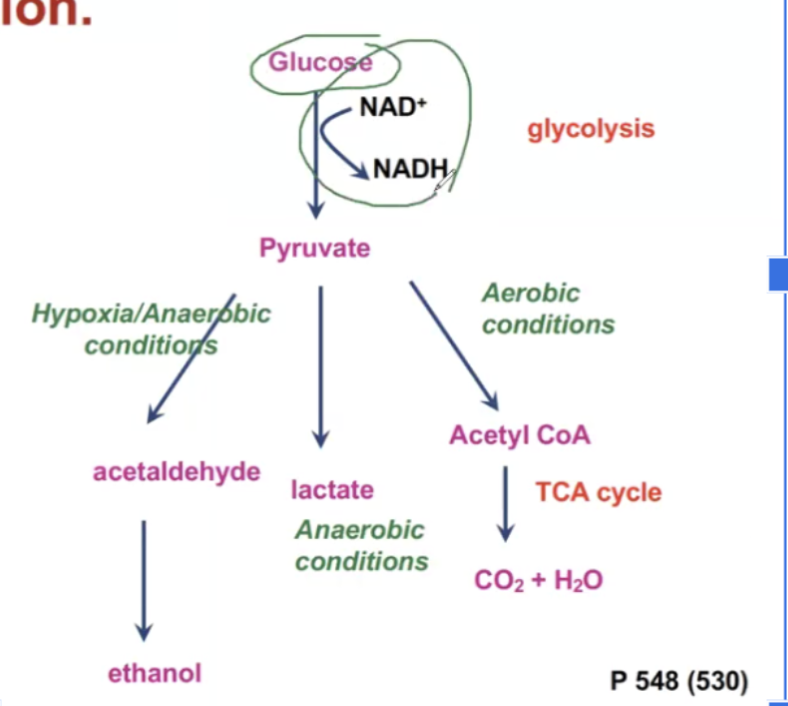The fate of pyruvate
1/10
There's no tags or description
Looks like no tags are added yet.
Name | Mastery | Learn | Test | Matching | Spaced |
|---|
No study sessions yet.
11 Terms
Why does the citric acid cycle stop when oxygen is unavailable?
Because oxygen is the final electron acceptor in the electron transport chain. Without it, NADH cannot be oxidized back to NAD⁺, and since NAD⁺ is required for key steps in glycolysis and the TCA cycle, the entire process stalls due to lack of NAD⁺.
What happens to pyruvate under aerobic conditions?
It is converted into acetyl-CoA and enters the TCA cycle, where NADH is oxidized in the electron transport chain.
What happens to pyruvate under anaerobic conditions in humans?
It is converted into lactate, regenerating NAD⁺

same with the acetaldehyde pathway
Under aerobic conditions what happens next to pyruvate after glycolysis?
Pyruvate is transported into the mitochondrial matrix via a transporter.
There, the enzyme pyruvate dehydrogenase complex (PDC) catalyzes an irreversible oxidative decarboxylation reaction:

PDC links glycolysis to the citric acid cycle (TCA cycle).
Role of Pyruvate dehydrogenase complex (PDC)

PDC converts pyruvate into acetyl-CoA in the mitochondrial matrix via oxidative decarboylation reaction
this complex contains 5 coenzymes most of which come from B vitamins:
NAD⁺ (from niacin/B3)
FAD (from riboflavin/B2)
Coenzyme A (CoA-SH) (from pantothenic acid/B5)
TPP (Thiamine pyrophosphate) (from thiamine/B1)
Lipoate (lipoic acid)
once Acetyl CoA is formed it will enter TCA cycle
since glycolysis happens in the cytosol and NADH is produced - can it enter the mitocondria to be used in the further steps of oxidation?
No bc the inner membrane is impermeable to NADH, needs to be tranferred via shuttle in order to enter the ETC